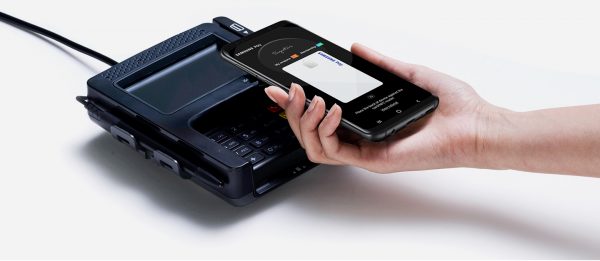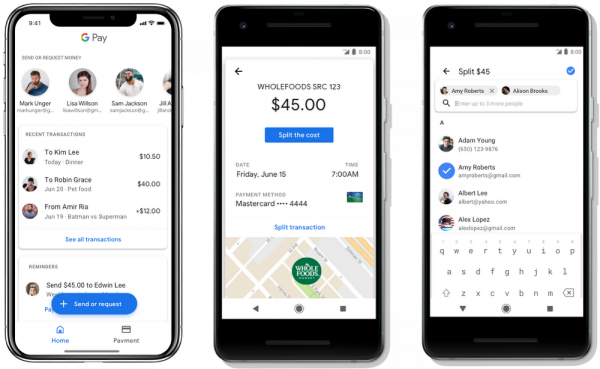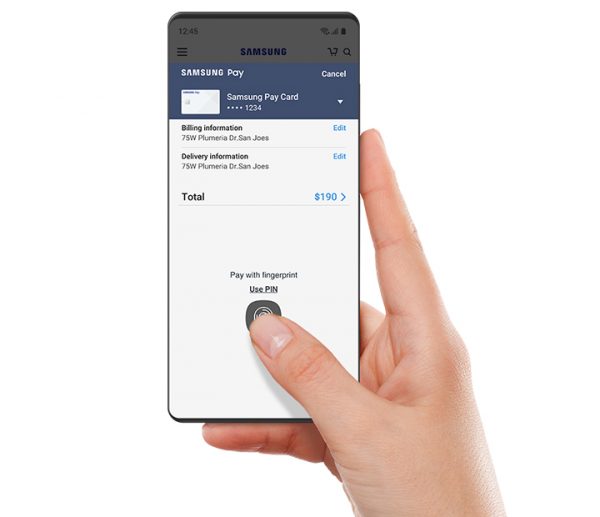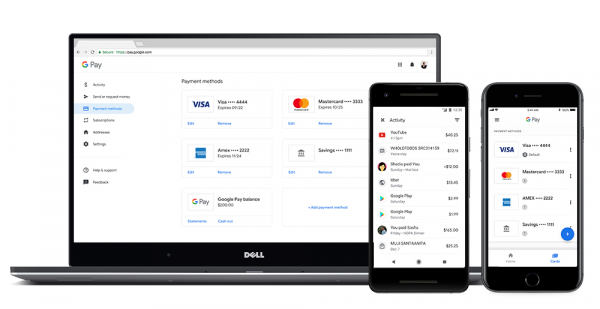Nowadays, almost everything is connected to your mobile and things have been simplified to cope with the demands. By all means, you’ll see business corporations actively transforming its business model in order to fit into the expeditious market place.
As part of the business, the payment system is no exception. Hence, you’ll find many companies including Google, Samsung or even Apple adapting into this ecosystem with the promise to revolutionize the conventional transactions with a more secure, and convenient approach. Hence, you’ll see transactions being made more frequently with Google Pay or Samsung Pay than with an actual banknote throughout the day.
With the rise of mobile payment platforms, it also sparks interest among the two highly-rated payment options — Samsung Pay and Google Pay. Though both of these payment systems boast similar functionalities, the daunting question on which of these digital wallets is better still remains an unsolved puzzle. So, here’s a rundown of Samsung Pay vs Google Pay, primarily focusing on their features and securities.
What Are Mobile Payment Platforms?
Generally, a mobile payment platform is a type of communication technology that makes monetary transactions simpler. And since most things are associated with mobile phones and the internet, cashless payment has become more popular over the years. What it does is it uses simple technology to simplify the payment process with just a few simple steps.
Not to mention the use of mobile payment is especially convenient to keep track of all the transactions comparing to the traditional banknotes. So, let’s say the amount of receivable is incorrect, you can easily identify the problem. Hence, you’ll see many businesses and even local vendors choose to adopt this payment technology, particularly for its convenience and security.
Samsung Pay vs Google Pay: What It Is?
Samsung Pay

As its name suggests, this is Samsung Electronics’ very own free-to-use, digital mobile payment platform, and digital wallet service. It’s available to use on all Samsung’s flagship Galaxy devices.
The company boasts that this service is one of the most widely-accepted mobile payment platforms out there, primarily because of the additional MST feature it uses. Samsung Pay was initially launched in South Korea on August 28, 2015. Less than a month after its initial release, Samsung Pay is available in the U.S too.
Google Pay

This platform is Google’s entry to the digital wallet and online payment market. Originally, Google had two prominent payment services. The first is Android Pay, which is used primarily for application-related or in-app purchases. The other is Google Wallet, which is Google’s original platform for online, in-store and peer-to-peer transactions. By January 2018, the company has merged these two platforms into one — Google Pay.
How Does Samsung Pay Work?

As a typical digital wallet, Samsung Pay features a platform that stores all your favorite card details securely in one place. Instead of having the fuss to look for your credit cards in your wallet, all you have to do is by clicking into the app to access these bank details easily.
With Samsung Pay, you can add or delete any credit or debit card details issued by the companies with more than 2,000 partner banks nationwide. In case if you’re wondering this payment system is able to store all your membership details, the answer is yes. The only requirement is that the membership or loyalty cards must come with barcodes to be stored in your Samsung Pay account.
If it’s not convincing enough, you can also connect your Paypal account to Samsung Pay. So, instead of cashing it out and absorbing the transactions fees, the use of Samsung Pay can actually help you to save some bucks.
How it actually works is that Samsung Pay uses Near-Field Communication (NFC) technology, like many other digital payment platforms. By using the NFC, it enables your phone to make unlimited transactions at the payment terminal in close proximity.
Apart from that, what makes this Samsung Pay unique when compared to Google Pay is it features a Magnetic Secure Transmission (MST) technology. What it does is it allow Samsung phones emit magnetic signals, imitating the magnetic strip at the back of a debit or credit card. Besides, it also makes Samsung Pay compatible and usable in older payment terminals. Hence, it’s compatible with terminals that read EMV chips.
How To Set Up Samsung Pay
If you want to use Samsung Pay, you must first download the application from the Google Play Store. Once you’ve installed the app, open the app and sign in with your Samsung account. During signup, you’ll be asked to add a pin code, fingerprint or iris scan.
After this, you’re now free to securely input your credit or debit card details into the app’s digital wallet. You can either type in your card information manually or uses your phone’s camera to scan your physical card details. After saving your card details, all you have to do is follow the card verification instructions on your screen. Once that’s done, you can now make any transactions and purchases via the app.
How To Use Samsung Pay
With all the setup done, the questions is, how can I use it?
So, to make a payment using Samsung Pay, all you have to do is by opening the app. Then, pick your desired card for payment. Prior to any transactions, you’ll be prompted to enter a payment mode either by entering your PIN or scanning your fingerprint or iris.
Next, hold your phone near the payment terminal. Once your card has been detected and payment has been confirmed, you’ll receive a notification containing details of the transaction. Do note, however, that if you’re using a debit card, you may be asked to input your card pin on the terminal.
How Does Google Pay Work?

The wallet features of G Pay that is derived directly from Google Wallet. Similar to Samsung Pay, you can store your bank, debit, credit, and membership card details all in one place. As a bonus point, Google Pay user can also store concert tickets, and boarding passes all in the wallet.
When it comes to in-person transactions, Google Pay primarily uses NFC technology to let any mobile devices connect to compatible terminals. Unlike Samsung Pay, it doesn’t have MST technology. However, when you use your overall Google account to log into Google Pay, it automatically connects your PC browsers to your account. Not only it lets you make in-app purchases from apps connected to the Play Store, but it also makes inputting payment details on online retailing websites through your browser a lot easier.
Additionally, using the Google Pay Send feature, you can easily transfer money to your friends on your contact list quickly and safely.
How To Set Up Google Pay
To use Google Pay on your mobile phone, you need to have the app installed. Then, open the app and login with your Google account. Open the “Cards tab” to add the details of the cards. You can do so by manually inputting details or using your phone’s camera to scan your card.
You can also link your Paypal to your G Pay account. After that, you’ll receive a verification code either via your email or via SMS to authenticate your card. Do note, however, that you need to set a phone lock code before you can use this app to make any payment.
How To Use Google Pay
Using your Google Pay to make purchases in a physical terminal is an easy task. You just need to tap the Google Pay button on the payment terminal, unlock your phone and wait for the payment confirmation. The best part, you don’t even need to open the application on your phone!
Apart from physical payments, you can also use Google Pay to conduct in-app purchases and online purchases using your Chrome web browser. To make in-app purchases, just tap the Google Pay button in an app that supports payment.
There is no Google Wallet fees with any transactions or transfers made with a debit card or bank-linkage to your Google Pay’s account. However, if you use a credit card for purchases using your account, you will be charged an additional 2.9%.
Samsung Pay vs Google Pay: Availability
Samsung

Currently, Samsung Pay is available to use in 25 countries around the world, including the US, the UK, South Korea, Australia, India, and Thailand, to name a few. It can be used to transact with NFC, MST, and EMV chip reader payment terminals that don’t require a physical card to be inserted in a slot.
However, only certain Samsung devices can use this feature. More specifically, it’s only compatible with Samsung Galaxy devices from 2015’s Galaxy Note 5 to the most recent flagship addition, the S10 Plus. It’s also compatible with the Galaxy Watch and Watch 2, Gear S2 and S3, and Gear Sport.

While Google Pay is available in more than 130 countries, its features vary depending on the place. Google product purchases and Chrome browser auto-fill are available in all countries where this payment platform is available.
Meanwhile, in-app purchases and online purchases are only available in more than 70 countries. In-person transactions, on the other hand, are only available in about 29 countries, and Google Pay Send is only available in the US and India.
The devices compatible with Google Pay are Android phones with Android 4.4 KitKat or later. Their phones also need to be compatible with NFC Technology for it to work properly.
Previously, physical Google Wallet cards or Google credit cards were on Google Wallet service. Unfortunately, this service has been discontinued and was not carried over to Google Pay during the merge with Android Pay.
Samsung Pay vs Google Pay: Security
Is Samsung Pay Safe?

Yes, and Samsung Pay makes use of four main layers of protection. Firstly, this platform is secure with because of its bank’s security features. Second is the authentication feature of the app itself, where every transaction needs to be PIN Code verification, fingerprint or iris scan.
Another security feature that this app uses is Tokenization. This feature creates a new, unique set of random numbers for each transaction, which means your actual card number is never shown on the app. Finally, Samsung’s very own Knox technology adds an extra layer of security by keeping an eye on your phone and mobile information and making sure it’s safe at all times.
Is Google Wallet Safe?

Yes, and there are many ways Google keeps your information secure. Same as Samsung, Google Pay also uses Tokenization technology so to conceal your actual card information during the transactions. Instead, the vendors will receive an encrypted code.
However, unlike any other tokenization processes, Google Pay creates its tokens within the cloud.
In terms of device authentication on your mobile phone, your phone’s overall lock code serves as your verification. If you choose to add another layer of security, however, you can also add a pin code specific to Google Pay.
Samsung Pay vs. Google Pay: Which Has More Potential To Grow?
While many vendors can accept Samsung Pay transactions due to its MST technology, its availability limitations can hinder its sustainability in the future. Besides, more and more establishments are starting to adapt to NFC technology. So, Google Play may have the upper hand in terms of longevity.
It’s available in more countries and in more devices. Meanwhile, Samsung Pay is only available in lesser countries and its only compatible with Galaxy phones and devices. Unless Samsung works its way around these limitations, Google Play have much more playroom to grow in the future.
The Verdict
As a comparison between Samsung pay vs Google pay, Samsung pay is the way to go if you have a Galaxy device and if you’re residing in a supported country. The MST technology coupled with NFC compatibility makes the Samsung Pay app more widely usable in the countries it’s available in. It’s much less of a hassle to use, and the added layer of Samsung’s Knox Security technology makes this even more attractive to use.
However, if you’re outside countries where Samsung Pay is available, or if you use non-Samsung Android phones, then Google Play is your top choice. It’s also convenient to use when you buy a lot of in-app items or make a lot of online purchases using a Chrome browser.
Mobile Payment Platforms For Convenience
Most people around globally have their lives revolve around their mobile phones. This makes digital payment platforms almost a must to have in this day and age. In the end, both Samsung and Google’s payment platforms are fast, convenient and secure.
But in order to make things easier for you, you must find out the differences between Samsung Pay vs. Google Pay. By knowing which features exist in each platform, you’ll be able to find one that’s tailor-fit to your needs.
